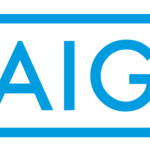Our clients sometimes ask why they should purchase side “A” directors and officers (D&O) liability coverage to protect their directors and officers from lawsuits when they are already providing broad indemnification for damages and defense through the corporate bylaws (or an equivalent).
The simplest answer is that D&O liability insurance is useful to attract and retain qualified board members. Their personal assets are at risk every day in making decisions to further the growth and success of your organization. Outside directors, in particular, tend to feel more secure when there is an insurance policy in place to back up the organization’s promise to indemnify. The side “A” portion of the coverage is protection for directors, officers or members of a board of managers (and other individuals in equivalent positions) in situations when they are not indemnified by the organization.
But if the organization intends always to indemnify its directors and officers, which is why the indemnification provisions in the bylaws exist, when would this side “A” insurance coverage ever come into play?
Indemnification of an organization’s directors and officers is generally permissible in every state for most causes of action; however, it is generally only mandatory in a limited number of circumstances. Therefore, in most cases, the company has the option to indemnify or not to indemnify. Possibly even more important is whether or not the organization is permitted to or will advance money to the directors and officers to properly defend themselves against allegations, whether or not those allegations have merit. The cost to defend these claims is often more than the actual damages, if any.
Prudence would suggest that an organization provide for broad indemnification provisions in its bylaws or equivalent, so as to attract and retain qualified board members. However, consider the following: Organizations generally may not indemnify their directors and officers when faced with a security holder derivative demand. This occurs when security holders or shareholders of the company step into the shoes of the organization and sue the directors and officers on the organization’s behalf. It is intended that the proceeds of the lawsuit be paid by the directors and officers directly to the organization, making the organization whole for the directors’ and officers’ liability. The security holders are indirect beneficiaries.
In this instance, most state statutes will not allow the organization to then turn around and indemnify its directors and officers for the money they were responsible to pay back into the company. This would be circular, and ultimately, the company would not be made whole.
In the event that the organization refuses to advance defense costs to a director or officer, whether or not the corporate bylaws state the defense will be advanced, the insurance policy can generally be written to provide those defense costs to the insured person. The insurance carrier will seek reimbursement from the organization, if warranted.
Organizations cannot indemnify their directors and officers if there are no corporate assets (i.e., the organization is in bankruptcy proceedings).
Finally, if one can imagine becoming a former director or officer of the organization, imagine also that the broad bylaws that were in place during the director’s time on the board become drastically revised with respect to indemnification of damages and advancement of defense costs for former directors and officers who are sued today for their actions while having served on the board in the past.
This is exactly what happened in Schoon v. Troy, a landmark case in 2008 (948 A. 2d 1157 Del.Ch. 2008). In this case, it was decided there is nothing barring a company from revising its bylaws in future years, even if only for one group of individuals such as former directors (other than if it agrees within the bylaws that it will not do so). Therefore, former directors and officers who have fallen out of favor could be at risk. The bylaws that were in place during their past tenure on the board will not necessarily be those in effect at the time of the future lawsuit. The insurance policy that is in place today, however, will generally be the policy that provides coverage for today’s lawsuit against the former board member.
Excess/DIC Side ‘A’ Coverage
In addition to buying side “A” coverage, organizations should also consider the purchase of excess/DIC side “A” coverage through a separate insurance policy.
D&O liability policies are often written to include coverage for lawsuits brought directly against the organization (side “C” coverage), which has resulted in a sharing of the policy limits among the organization and its directors, officers or members. In addition, where the organization is covered under the policy, bankruptcy courts have in some situations seized the D&O liability policy as an asset of the bankruptcy estate, leaving the directors, officers or members without coverage. So one benefit of the excess/DIC side “A” coverage is that it provides separate limits that apply only for the directors and officers, not the organization.
These policies are written with very few exclusions and will provide coverage on a primary basis where the coverage is broader than the underlying primary D&O liability policy. One major benefit is that the policy does not typically have an insured v. insured exclusion (or this exclusion might be limited to an entity v. insured exclusion). If there is concern about one director being sued by fellow board members with regard to the management of this company, certain excess/DIC side “A” policies can be purchased to provide protection in those suits. These suits are usually excluded in a primary D&O liability policy. Likewise, there could be other exclusions in your primary D&O policy that might not exist in an excess/DIC policy, such as exclusions for claims arising out of manufacturing or distribution of products or intellectual property exclusions.
There are several other key advantages to the purchase of an excess/DIC side “A” policy.
Excess coverage to protect the directors, officers or members in situations where the organization is unable to indemnify the directors, officers or members (“non-indemnified” claims) due to:
- Bankruptcy or where prohibited by law (shareholder derivative lawsuit) and the underlying limits have been exhausted;
- Difference in conditions (DIC) coverage in situations such as where the traditional D&O liability policy is seized by a bankruptcy court as an asset of the estate;
- Difference in conditions (DIC) coverage for situations where the underlying D&O liability carrier wrongfully refuses to indemnify the directors, officers or members;
- Drop-down coverage for situations where the underlying D&O liability carrier is able to rescind the underlying policy;
- Drop-down coverage in the event the underlying carrier becomes insolvent.
Benchmarks
According to the most recent Towers Watson Directors and Officers Liability Survey, side “A” D&O liability coverage is the most widely purchased component of a D&O liability policy by an organization. Of its 401 survey respondents (public, private and nonprofit), 86 percent purchased side “A” coverage, either on its own or in addition to either side “B” (coverage for the organization’s indemnification of its directors, officers or members) or side “B” and side “C” (coverage for suits brought directly against the organization); 57 percent purchased excess side “A” or side “A” DIC policies. The vast majority of organizations cited the breadth of the coverage under the excess/DIC side “A” policies as their main reason for making that purchase. These percentages increase each year.
A Prudent Purchase
There are several reasons why an organization’s promise to indemnify might fail its directors and officers (whose personal assets are at risk every day) in their time of need. Purchasing D&O liability insurance, particularly the side “A” coverage component, provides extra assurance to directors and officers that the organization’s promise to indemnify will be fulfilled. Many organizations take it one step further and purchase broader protection through an excess/DIC side “A” policy. Therefore, this is a prudent purchase that will help to attract and retain qualified leaders in an organization.
Topics Lawsuits Excess Surplus
Was this article valuable?
Here are more articles you may enjoy.


 State Farm Implements 27% Rate Increase for Illinois Homeowners
State Farm Implements 27% Rate Increase for Illinois Homeowners  People Moves: Consilium Taps Carpenter’s Coleman for C-Suite After Co-CEO Baird Suddenly Exits; Everest Promotes Shaw as Chief Commercial Officer of Int’l Division
People Moves: Consilium Taps Carpenter’s Coleman for C-Suite After Co-CEO Baird Suddenly Exits; Everest Promotes Shaw as Chief Commercial Officer of Int’l Division  US Tariffs Projected to Slow Global Economy and Insurance Premium Growth: Swiss Re
US Tariffs Projected to Slow Global Economy and Insurance Premium Growth: Swiss Re  Former Lloyd’s CEO Neal to Lead General Insurance as President at AIG
Former Lloyd’s CEO Neal to Lead General Insurance as President at AIG 


